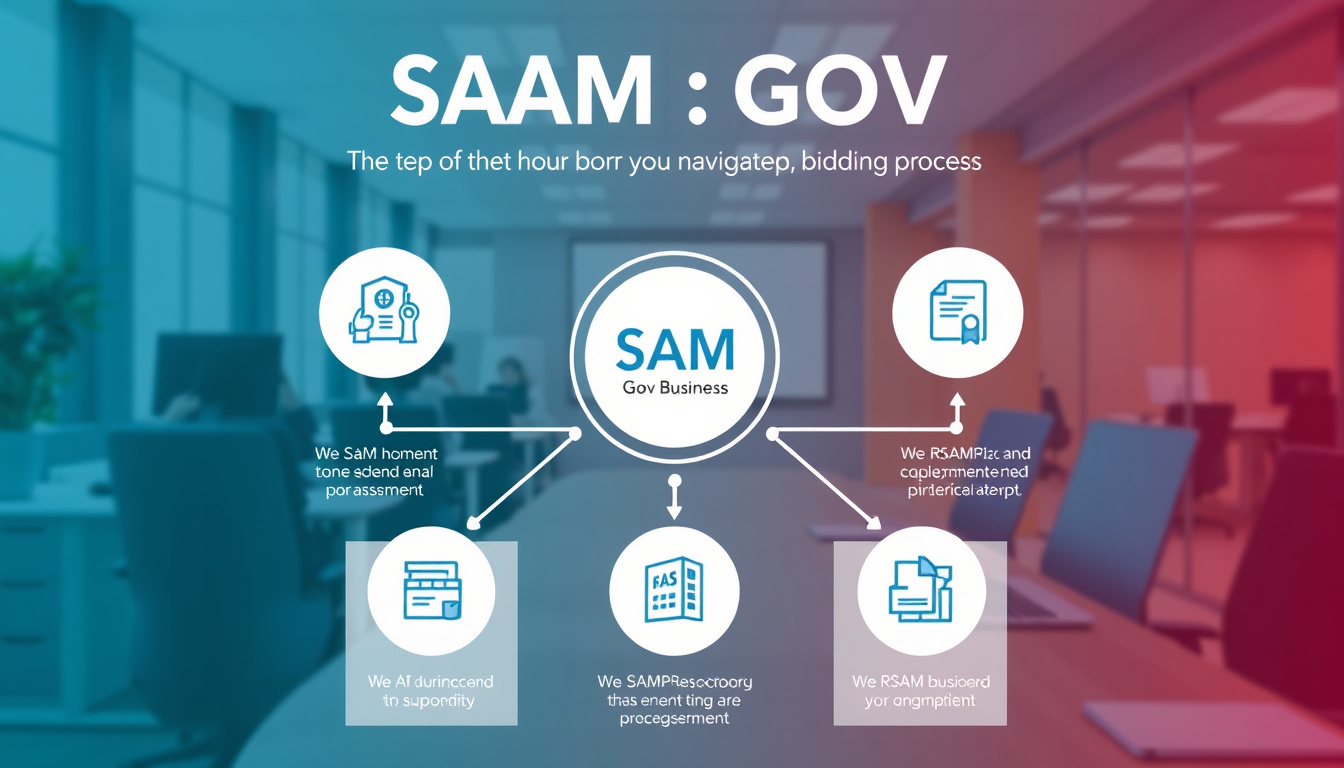How to Navigate the SAM.gov Bidding Process: A Step-by-Step Guide for Small Businesses

Winning federal contracts is a significant growth opportunity for small businesses. The key gateway to federal contracting is SAM.gov (System for Award Management), the official U.S. government website for contract opportunities. This guide distills essential steps and practical advice from top government resources to help small business owners and consultants understand and successfully navigate the SAM.gov bidding process.
What is SAM.gov and Why Is It Important?
Before you can bid on federal contracts, you need to understand SAM.gov:
- SAM.gov is the official government portal that federal agencies use to post contracting opportunities valued at $25,000 or more.
- It allows businesses to register, search contract opportunities, view award notices, and manage bids.
- Registration on SAM.gov, including obtaining a Unique Entity ID, is mandatory to do business with the federal government.
- The site also integrates other essential contracting information, such as wage determinations and entity exclusion lists.

Step 1: Register Your Business on SAM.gov
Why? Registration is the baseline for accessing opportunities and submitting bids.
- Create a user account at login.gov.
- Complete entity registration by providing your business details, including your Tax Identification Number (TIN), bank information, business size, and capabilities.
- Obtain your Unique Entity ID during registration — this replaces the older DUNS number.
- Keep your registration active — renew annually to avoid losing eligibility.
- Note: Allow time for validation; if your documentation does not immediately match, expect a manual review that can take several days.
Step 2: Build a Comprehensive Business Profile
- Your SAM.gov profile feeds into the Dynamic Small Business Search (DSBS) database used by federal agencies to find contractors.
- A detailed, keyword-rich profile improves your discoverability when agencies or prime contractors search for experienced vendors.
- Include your NAICS codes, past performance, certifications (e.g., women-owned, veteran-owned), and differentiators.
Step 3: Search for Contract Opportunities
- Visit the Contract Opportunities section on SAM.gov to view current federal solicitations, pre-solicitation notices, and awards.
- Use the Advanced Search filters to narrow results by location, contract value, agency, set-aside type, and other criteria relevant to your business.
- Save search parameters and set alerts for new matching opportunities by creating and maintaining your SAM.gov user account.
- Review agency procurement forecasts to anticipate upcoming contracts.
Step 4: Understand the Types of Contracts and Set-Asides
- Federal contracts come in various forms: firm-fixed-price, cost-reimbursement, indefinite delivery, etc. Each has different risk and compliance implications.
- Many contracts have small business set-asides that reserve bidding for certain categories such as 8(a), HUBZone, women-owned, or service-disabled veteran-owned businesses.
- Identify which socioeconomic programs apply to your business to leverage exclusive bidding rights.
Step 5: Prepare Your Bid Package
- Carefully read the solicitation or Request for Proposal (RFP) on SAM.gov.
- Follow instructions exactly: submit all required documents by deadlines.
- Demonstrate compliance with the Federal Acquisition Regulation (FAR) and agency-specific requirements.
- Address evaluation factors clearly: technical capability, past performance, price proposal, and socio-economic status.
Step 6: Submit Your Bid and Monitor Results
- Submit your bid through SAM.gov or the designated portal referenced in the solicitation.
- Keep copies and track submission confirmations.
- Check your user dashboard for updates or communications from contracting officers.
- Be prepared for possible follow-up questions or requests for clarifications.
Step 7: If Your Bid Is Unsuccessful, Stay Engaged
- Review awarded contracts via SAM.gov and Federal Procurement Data System (FPDS) to understand competitor strengths.
- If you believe the award was made unfairly, learn about protest options through the Small Business Administration (SBA).
- Use feedback to refine your future bids.
- Consider subcontracting opportunities via SBA’s SubNet and GSA subcontracting directories.
Additional Resources and Support
- Federal Service Desk (FSD): Official helpdesk for SAM.gov registration and technical assistance.
- SBA Office of Small and Disadvantaged Business Utilization (OSDBU): Agency-specific small business support offices provide training, networking, and forecast information.
- Acquisition.gov and FAR: Learn federal rules governing contract solicitations.
- Workshops and PTACs: Procurement Technical Assistance Centers help you understand bidding and proposal preparation.
Summary: Keys to SAM.gov Bidding Success
| Key Step | Practical Tip |
|---|---|
| Register on SAM.gov | Complete every detail accurately; renew annually. |
| Build your profile | Use all relevant NAICS and certifications. |
| Search opportunities | Use advanced filters; create saved searches. |
| Understand contract types | Target set-asides matching your business status. |
| Prepare bids precisely | Follow solicitation instructions; emphasize strengths. |
| Monitor bidding outcomes | Use feedback for future improvement; explore protests if needed. |
| Access support | Leverage SBA and PTAC resources regularly. |
By following this structured approach, small businesses can more confidently navigate the complexities of the SAM.gov bidding process, leading to increased chances of winning federal contracts and growing their business through government opportunities.
To learn more about how GovScout helps businesses find and win federal contracts, visit govscout.io or email hello@govscout.io.



Leave a Reply